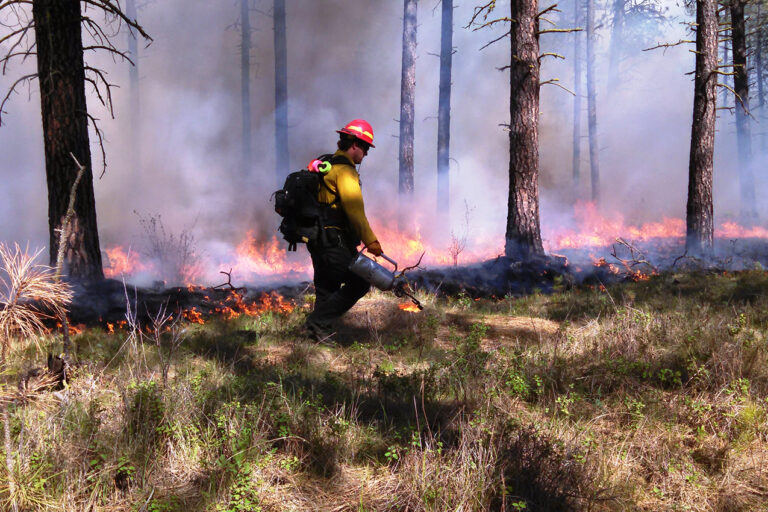California’s headwater forests are not thriving under current management practices, and changes are needed to make them more resilient to periodic drought and long-term climate change. More active management of these lands is needed to improve forest health, reduce the risk of major wildfires and pest infestations, and maintain the flow of benefits provided by this critical natural infrastructure.
Decades of fire suppression, an emphasis on short-term management priorities, weather extremes, and a warming climate have set the stage for the decline in forest resilience. Two-thirds of the state’s surface water supply originates in these mountainous forests. California stands to lose timber production, wildlife habitat, recreational opportunities, and water supply if this vital natural infrastructure continues to decline. Management options exist—prescribed fire, managed wildfire, mechanical thinning, and forest pest treatments—that can help rebuild resilience in these forests and prepare them for a challenging future.
California needs to increase the pace and scale of efforts to improve forest health. The strategic removal of high-density smaller trees and fuels is essential to increasing long-term resilience of headwater forests. This will require management, regulatory, and legal reforms. We suggest changes in three areas:
- Make long-term forest health the top priority for guiding agency rules, policy, and management practices.
- Define forest treatment needs and make the most of available funds.
- Make greater use of tools that create opportunities for collaboration.
Within each of these broad themes, we suggest specific reforms and actions to implement them. Many of these actions can take place without major legislation or large increases in funding, relying instead on changes in rules or administrative decisions. Taken together, implementing these reforms will improve the health of California’s headwaters and ensure the environmental, social, and economic benefits they provide.
